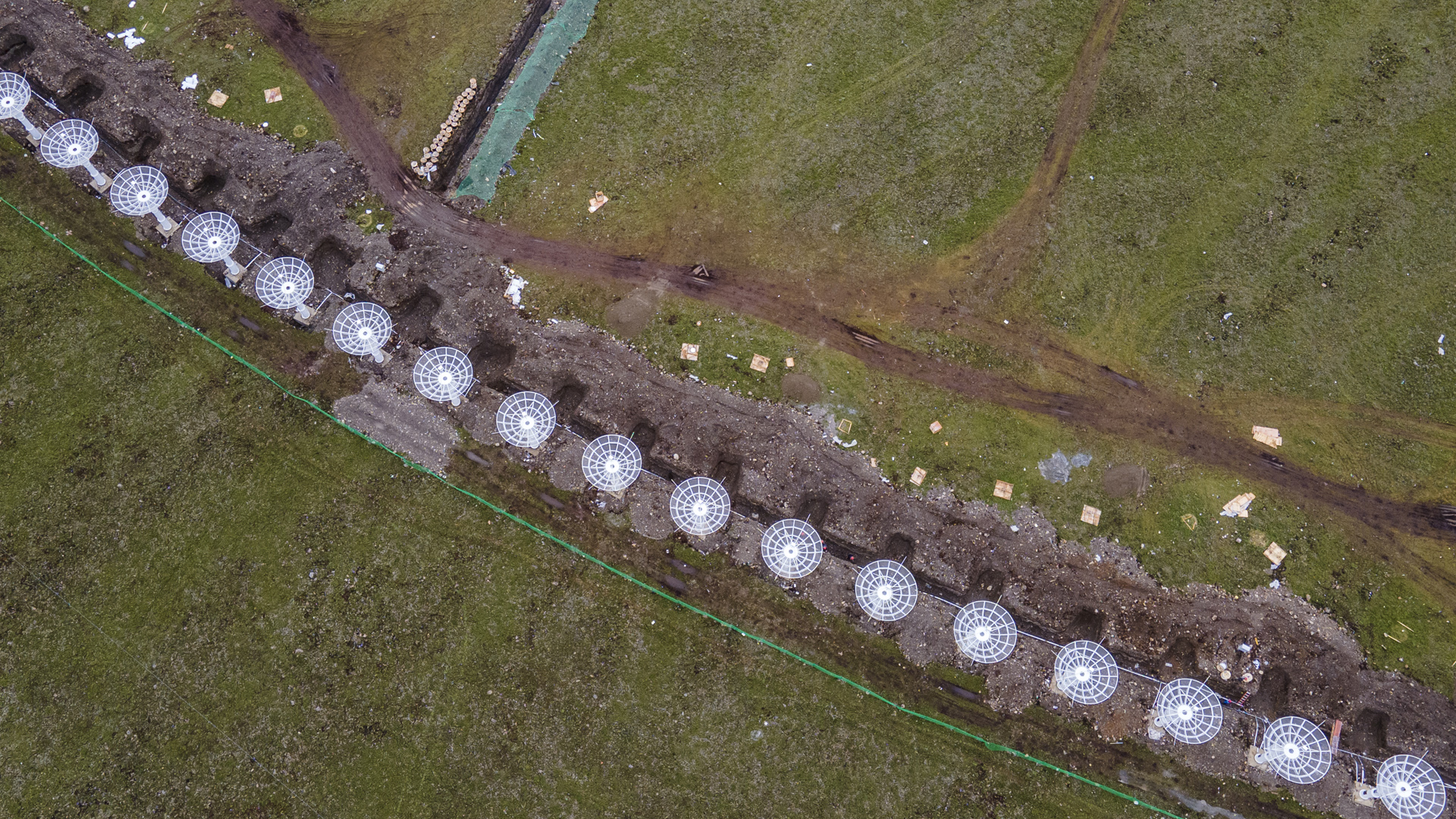China is building a huge ring of telescopes to study eruptions on the sun
A 1.95-mile-circumference array of dishes will enable new solar research.

China is building the world's largest array of telescopes dedicated to studying the sun with the aim to improve the understanding of coronal mass ejections which can cause chaos on and above Earth.
The Daocheng Solar Radio Telescope (DSRT) is under construction on a plateau in Sichuan province, southwest China. When completed, it will consist of 313 dishes, each with a diameter of 19.7 feet (6 meters), forming a circle with a circumference of 1.95 miles (3.14 kilometers).
The telescope array will image the sun in radio waves to study coronal mass ejections (CMEs), large eruptions of charged particles from the sun's upper atmosphere, the corona.
CMEs are triggered by realignments in the star's magnetic field that occur in sunspots. When directed at Earth, these eruptions can wreak havoc on power grids, telecommunications, orbiting satellites and even put the safety of astronauts at risk. On the other hand, CMEs are also responsible for the colorful aurora displays that can be observed in the night sky in polar regions.
Related: Satellites can disappear in major solar storms and it could take weeks to find them
Images from the construction of the DSRT were published by China News Service in June. The South China Morning Post reported that the array is on schedule to be completed by the end of this year.
The development is part of a ground-based space environment monitoring network called the Chinese Meridian Project (Phase II).
Breaking space news, the latest updates on rocket launches, skywatching events and more!
The project also includes the Chinese Spectral Radioheliograph for monitoring solar activity, which is being constructed in Inner Mongolia.
The radioheliograph will consist of 100 dishes in a three-arm spiral arrangement and will study the sun in a wider band of frequencies than DSRT to further Chinese research of the sun, solar physics and space weather.
The entire project aims to run close to 300 instruments deployed at 31 stations across China at specific longitudes and latitudes. It is led by the National Space Science Center (NSSC) of the Chinese Academy of Sciences and involves more than 10 institutions and universities in China.
Follow us on Twitter @Spacedotcom and on Facebook.

Andrew is a freelance space journalist with a focus on reporting on China's rapidly growing space sector. He began writing for Space.com in 2019 and writes for SpaceNews, IEEE Spectrum, National Geographic, Sky & Telescope, New Scientist and others. Andrew first caught the space bug when, as a youngster, he saw Voyager images of other worlds in our solar system for the first time. Away from space, Andrew enjoys trail running in the forests of Finland. You can follow him on Twitter @AJ_FI.
